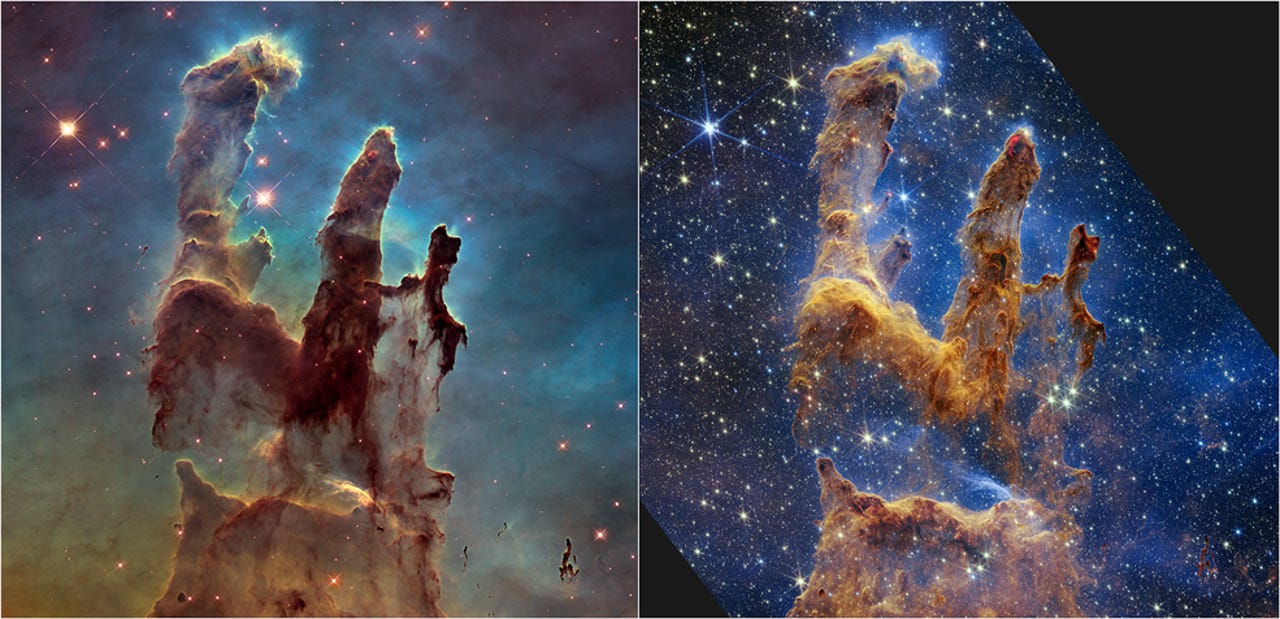NASA's Webb telescope takes dazzling images of the Pillars of Creation


The Pillars of Creation photographed in 1995 (left) by the Hubble Space Telescope and in 2022 by the James Webb Space Telescope (right).
Despite looking like an AI-generated image of space, the image above and to the right is a photograph of the Pillars of Creation, captured by the James Webb Space Telescope. In a colorful landscape, the photo showcases glimmering stars forming within dense clouds of gas and dust.
Innovation
The Pillars of Creation were originally made famous in 1995 by NASA's Hubble Space Telescope. As seen by the image taken by Webb's Near-Infrared Camera (NIRCam), imaging and telescope technology has come a long way.
Also: NASA: This is the weird sound of a meteoroid hitting Mars
The new view of the Pillars will help researchers learn more about star formation with far more precise counts of newly formed stars and quantities of gas and dust. Eventually, scientists will be able to have a better understanding of how stars burst out from these clouds over millions of years.
The bright red orbs that lie outside one of the dusty pillars are newly formed stars. If you are thinking to yourself, "that sure doesn't look like a star," you aren't entirely wrong. When knots with sufficient mass form within the pillars of gas and dust, they eventually begin to collapse under their own gravity, heat up and form new stars, according to NASA. The wavy lines that look like lava on the edge of the pillars are ejection from stars that are forming.
The tightly cropped image of the Pillars is set within the Eagle Nebula, which lies 6,500 light-years away.